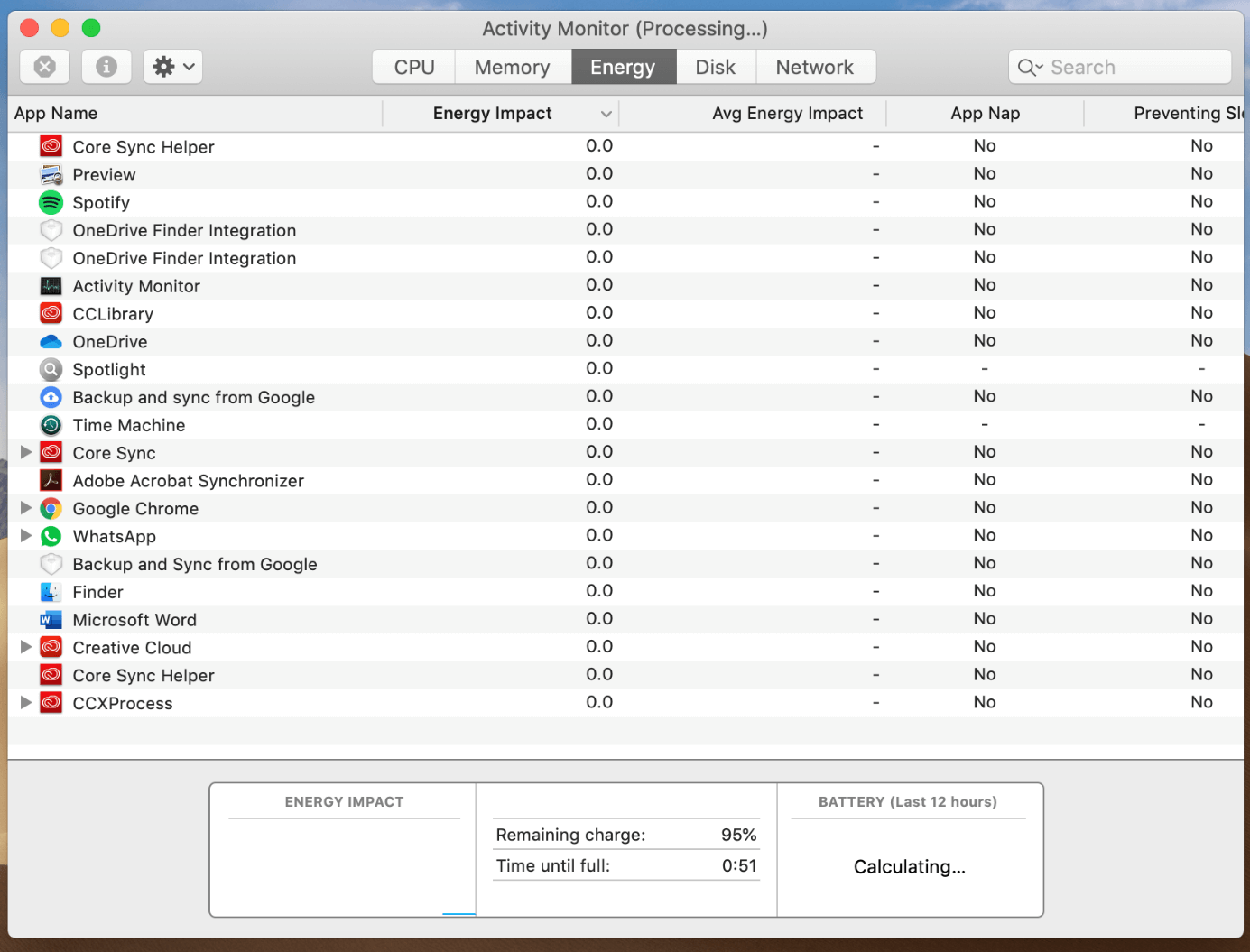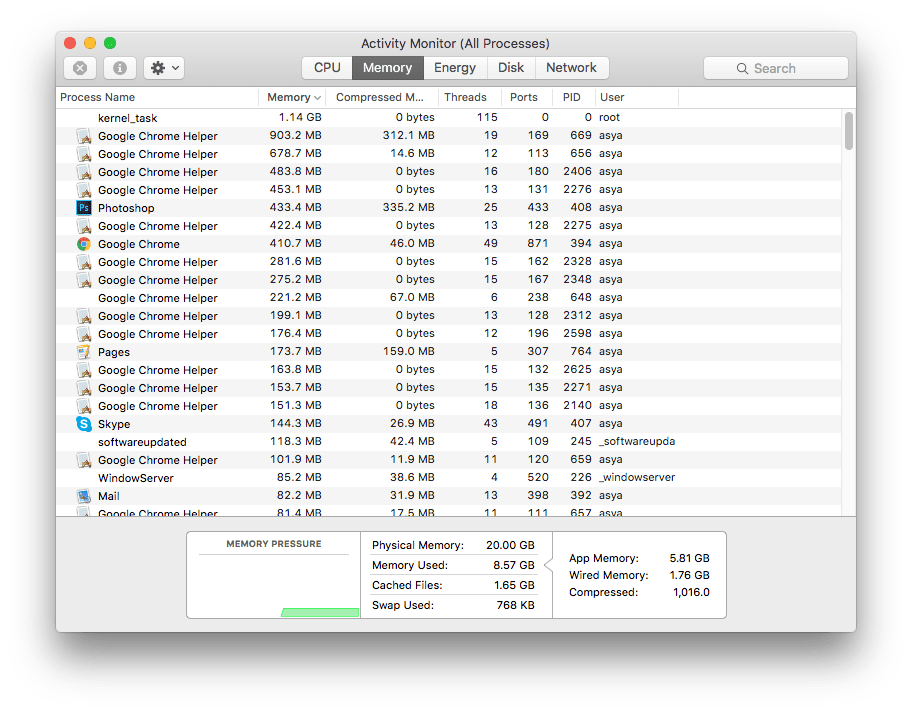
However, when a process that is running under a security context different from the one of the process which issued the call to TerminateProcess, the use of the KILL command line utility is required. Unlike choosing End Task from the Applications tab, when choosing to End Process the program is not given warning nor a chance to clean up before ending.
#Mac task manager resources windows#
Choosing to "End Process Tree" causes Windows to immediately kill the process, as well as all processes directly or indirectly started by that process. Choosing to End Process causes Windows to immediately kill the process. Right-clicking a process in the list allows changing the priority the process has, setting processor affinity (setting which CPU(s) the process can execute on), and allows the process to be ended. It has a more rudimentary user experience and can perform some additional actions. The Details tab is a more basic version of the Processes tab, and acts similar to the Processes tab in Windows 7 and earlier. Both a graceful exit command and a termination command can be sent from this tab, depending on whether the command is sent to the process or its window. This tab shows the name of every main window and every service associated with each process.

The Delete key can also be used to terminate processes on the Processes tab. This list includes Windows Services and processes from other accounts. The Processes tab shows a list of all running processes on the system. Issuing an end taskcauses a request for graceful exit to be sent to the application. Right-clicking any of the applications in the list allows switching to that application or ending the application's task.

It has a "more details" hyperlink that activates a full-fledged Task Manager with several tabs. In summary mode, Task Manager shows a list of currently running programs that have a main window. This setting is remembered for that user on that machine. It can be switched to a more detailed mode by clicking More Details. The first time Task Manager is invoked by a user, it shows in a simplified summary mode (described in the user experience as Fewer Details).

Task Manager on Windows XP, showing the Processes tab Prior versions Windows NT, as well as Windows 3.x, includes the Task List application, is capable of listing currently-running processes and killing them, or creating a new process. Windows 9x has a program known as Close Program which lists the programs currently running and offers options to close programs as well shut down the computer. Task Manager was introduced in its current form with Windows NT 4.0. The program can be started in recent versions of Windows by pressing ⊞ Win+ R and then typing in taskmgr.exe, by pressing Ctrl+ Alt+ Delete and clicking Start Task Manager, by pressing Ctrl+ ⇧ Shift+ Esc, or by right-clicking on the Windows taskbar and selecting "Task Manager". Task Manager can also be used to set process priorities, processor affinity, start and stop services, and forcibly terminate processes.

It provides information about computer performance and running software, including name of running processes, CPU load, commit charge, I/O details, logged-in users, and Windows services. X86 and 圆4 Task Manager, previously known as Windows Task Manager, is a task manager, system monitor, and startup managerincluded with Microsoft Windows systems.


 0 kommentar(er)
0 kommentar(er)
